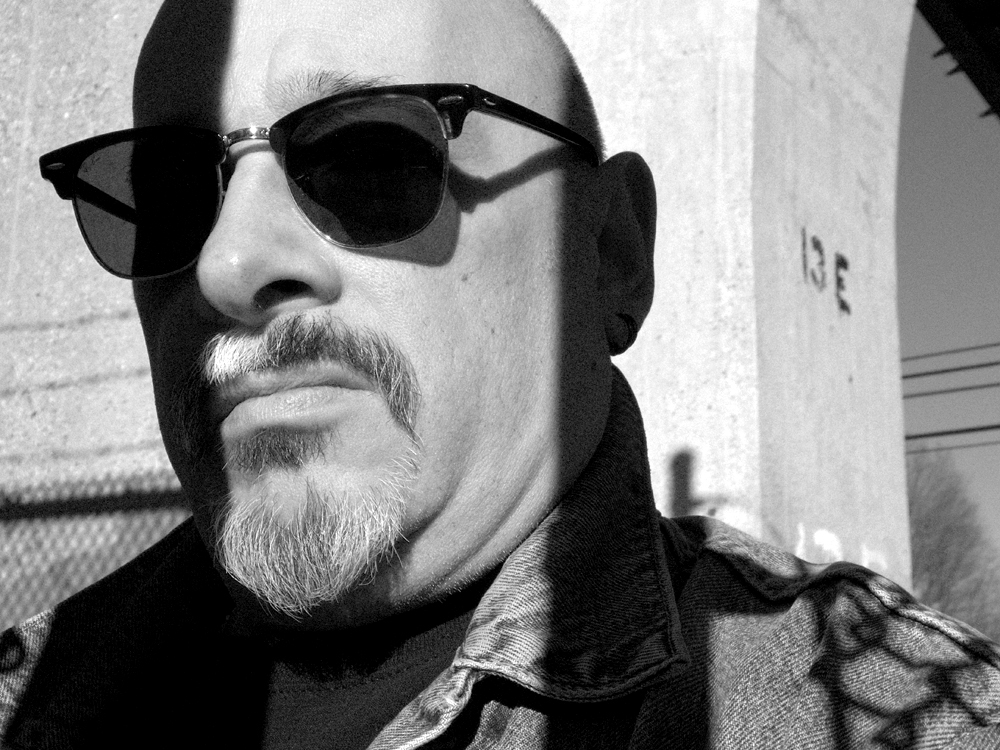
Artist Talk: Photographer Len DeLessio talks about building a connection with your subject — no matter who they are
Tuesday, March 1st, 2022
The transfer of personality and presence into a photograph can be a tricky challenge. The subject may be bathed in a stage spotlight, relaxing with family, or simply standing by a window lit by natural light but, no matter what, using a camera to capture something unique is a hard-won gift.
Len DeLessio’s gift started spreading its wings on Dec. 1, 1971. That’s the date that DeLessio found himself in a hotel room with the Alice Cooper Band between shows. He was just “a kid with a camera,” his bio reads, “and the band members were only a few years older than he was.” Since then, a five-decade career has led to assignments for major music magazines and record labels, worldwide exposure, a special collection at the Rock and Roll Hall of Fame and more.
DeLessio visits PCA&D March 11 for a 10:15 public Artist Talk in the Atrium. An instructor in Studio Photography at his alma mater, the School of Visual Arts in New York City, DeLessio below shares his thoughts on the challenges of portraiture, the act of photographing friends vs. strangers — and who he’d love to get in front of his camera.
Artist Talk: Len DeLessio
Friday, March 11, 10:15 am
Open to the public; masking required
For you, is there a special challenge in taking a portrait — if so, what is it?
Len DeLessio: Putting technical issues aside, assuming your camera and other equipment are all working well and ready to use, there are always challenges in any project that involves other humans. It’s one of the reasons I chose to work with still life for many years. The first challenge is getting them to agree to be photographed, and then your next concern would be will that they actually show up, or cancel the session completely. If the person is someone familiar to you, then it’s just another opportunity to spend time with that person. If they are a stranger, then other factors come into play, including their age, real or self-proclaimed status in society, are they a celebrity in entertainment, business, or politics, and the numbers of people in the case of a group photo. Their availability, time constraints, and location also have to be considered.
Photographing friends and family is usually either fun, or limited in any pressure to perform. When the subject is a stranger to you, especially if it’s someone well known, nerves become a factor. The photographer/filmmaker Cass Bird tells a story about the start of any photo session. Quoting Cass: “There’s something about the first day of a photo shoot that reminds me of high school, in a sense it’s like the first day of school. You arrive to set and, most likely it’s a bunch of people you don’t know, and a subject you don’t know, and a client, so it has that ‘first day of school’ element. You want to feel comfortable, and you want to be liked. To be honest about it … I’m like really, I’m freaking out, I can barely breathe.” Overcoming your own self-consciousness and nerves is probably the greatest challenge when making a portrait of any stranger. Dealing with nerves and anxiety are best done in your own personal way, and for many, including myself, this is the hardest part, the part that I feel takes courage.
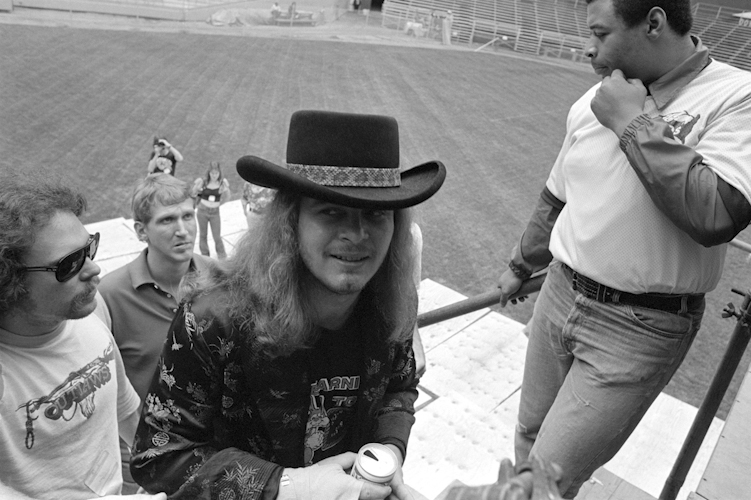
Lynyrd Skynyrd behind the scenes at RFK Stadium; photo courtesy Len DeLessio.
Do you prefer the studio setting these days, or more of a spontaneous capture of someone’s image? Have you ever found one more creatively challenging than the other?
LD: Having just written about overcoming nerves, I prefer to work in a situation or location where I have some level of control. I spent years operating large studio spaces in New York City, enjoying the consistency and control of having my own photo studio. What I didn’t like is the enormous cost of maintaining a large operation. When I gave up running a full-time studio business it was easy for me to transition back to how I started in the business. In my very early years, I carried around a bag with a monolight studio flash, a stand and umbrella, camera, lenses, meter, and film. As the only photographer in the music business that did studio-type lighting, when everyone else was using on-the-camera speedlights, I stood out as someone who was going to make the artists look good. There are many situations back then where I was given a time limit as brief as 20 minutes to work with a musician in their hotel room or office. The plan was to get in, set up, shoot, and be rushed out. Offices, hotel rooms, dressing rooms, and clubs were my studios for those brief sessions. The celebrity photographer Luke Fontana also worked that way at the beginning of their career.
So that leads me to define what a studio means to me. A studio is any space where a photographer can control light. It can be almost anywhere, including controlling illumination in an exterior location or a place where there is already some kind of natural or artificial light. Being able to balance the combination of flash and continuous/ambient/existing light is an absolute requirement. For portrait work today, I will make a “studio” in the person’s home or personal space, or use a studio at school if more space is required. Most of the photography and video projects I’m working on now are done in our home, in the dining room or the playroom I share with our grandchildren.
“Overcoming your own self-consciousness and nerves is probably the greatest challenge when making a portrait of any stranger. Dealing with nerves and anxiety are best done in your own personal way, and for many, including myself, this is the hardest part, the part that I feel takes courage.”
In your point-and-shoot Faces series, have you focused primarily on subjects you already know? Are the approach and aim the same in that case as it is with a public figure you’re assigned to photograph?
LD: The “Faces” series (images) were all people I know. Most were students or colleagues. There were many reasons why I decided to do it, and will do it again sometime soon. The primary reason was to satisfy my own need to make pictures, and ones that had no commercial purpose. The other was to disassemble the myth that you must own expensive equipment to make good pictures. The approach was very casual. The people were familiar with the small point-and-shoot camera that I often walked around with in school, and I showed them the flashlight I was going to light them with. So it went something like this; “Hey let me take your picture, come stand in front of this window. Close your eyes and open them when I tell you to, and look at the lens. I usually shot three or four frames and that was it. My approach to a subject, in a more formal photo session, is very different, especially if the person is not someone I’m familiar with.
My way of working is very similar to the way the photographer Platon (a British portrait and documentary photographer) works. Unlike Richard Avedon and Annie Leibovitz, who will direct and control the subject, Platon makes a connection with the person, and gets physically close to them, often at a slightly low angle. Platon tells a story about his photo session with Vladimir Putin. It’s important to do some research about someone, especially before being face to face with someone of Putin’s magnitude. He found out that Putin was a fan of The Beatles. After introducing himself, he asked Mr. Putin the following question; “Mr. Putin, I understand you like The Beatles.” Putin’s serious and intimidating expression immediately softened and a connection was made. The hard expression returned, and can be seen in the resulting portraits. However, a connection was made that facilitated Platon’s ability to be physically close to one of the most powerful and scary people on the planet.
In my own work, I will find out as much as I can about the people I photograph, then start a conversation about something in their life or career that is not fan-based. I never act like their “biggest fan.” I quickly establish a relationship structure that is based on respect and the fact that we are both professionals. I never forget that they are the reason we are together at that moment. They are the center of attention.
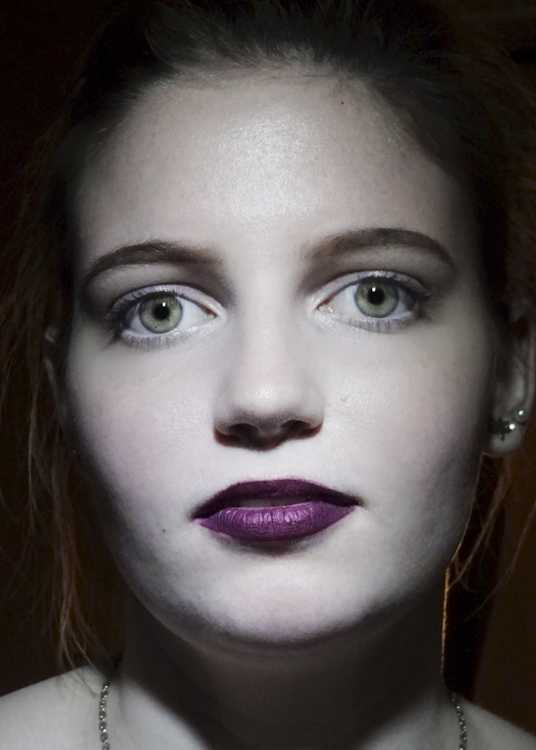
Photo courtesy Len DeLessio
Faces seems to let you strip everything down to the basics — is that accurate?
LD: Yes, that is completely accurate. As I mentioned earlier, part of the purpose of the project was to make pictures without expensive equipment. Most of the “Faces” pictures were made in front of a window, lit with a small flashlight, and captured with a small Sony point-and-shoot camera. By the way, I’ve used that same camera to make stock photography and video work that produces income.
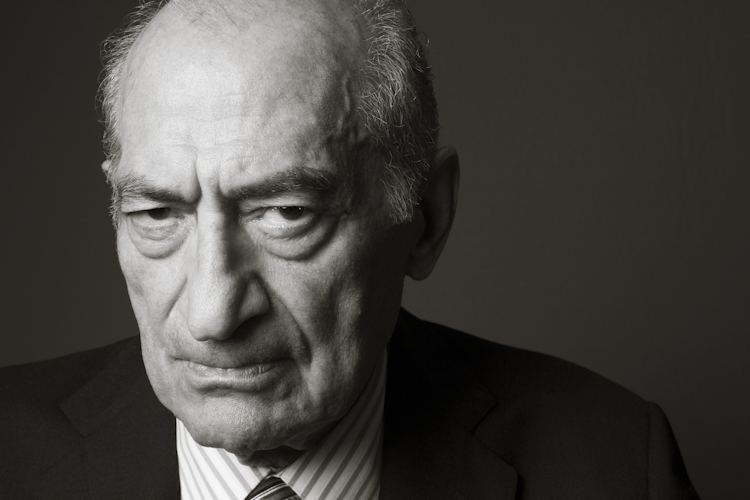
Photo courtesy Len DeLessio.
And, finally, who have you NOT had a chance to photograph that you’d love to capture with your lens?
LD: That’s really a great question and one that I had to think about. Maybe Lady Gaga! I know her family was in the restaurant business so she knows food, and she’s Italian. She’s usually photographed in big productions by the greatest names in the photography business. I’d want to set up in her living room with a monolight and an umbrella. Here’s how it would start: “Lady Gaga, Hi, I’m Len, I have to ask this question, I ask it often when I talk to Italian Americans, especially ones from New York City. What’s the stuff that goes on pasta? Is it “sauce” or “gravy”?
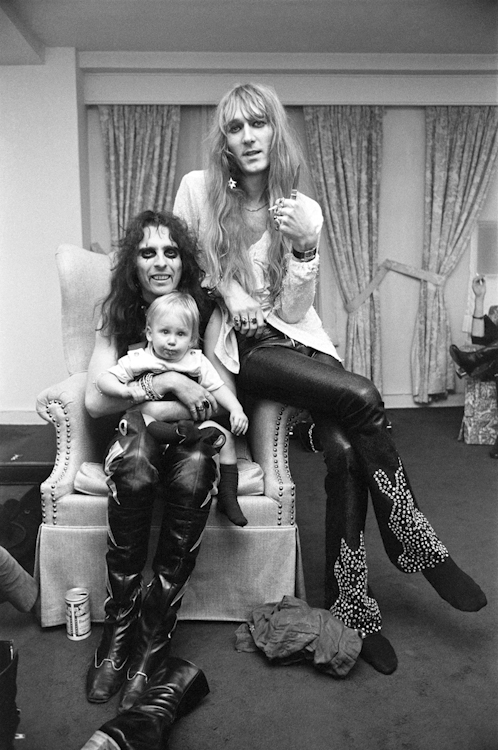
Alice Cooper, courtesy Len DeLessio: A photo that started it all.
Instagram: @lendelessio
PCA&D Into the Darkroom podcast interview with Len DeLessio:
